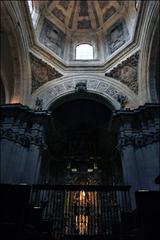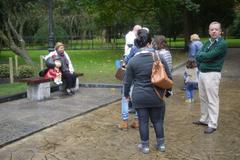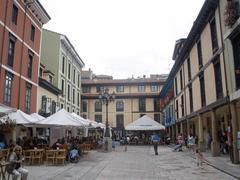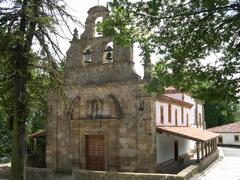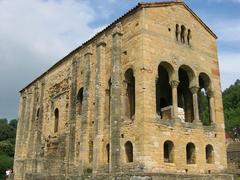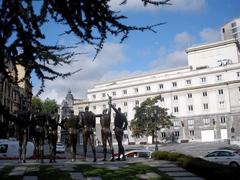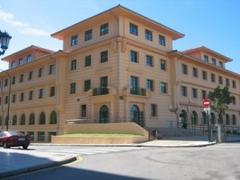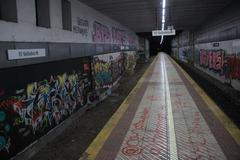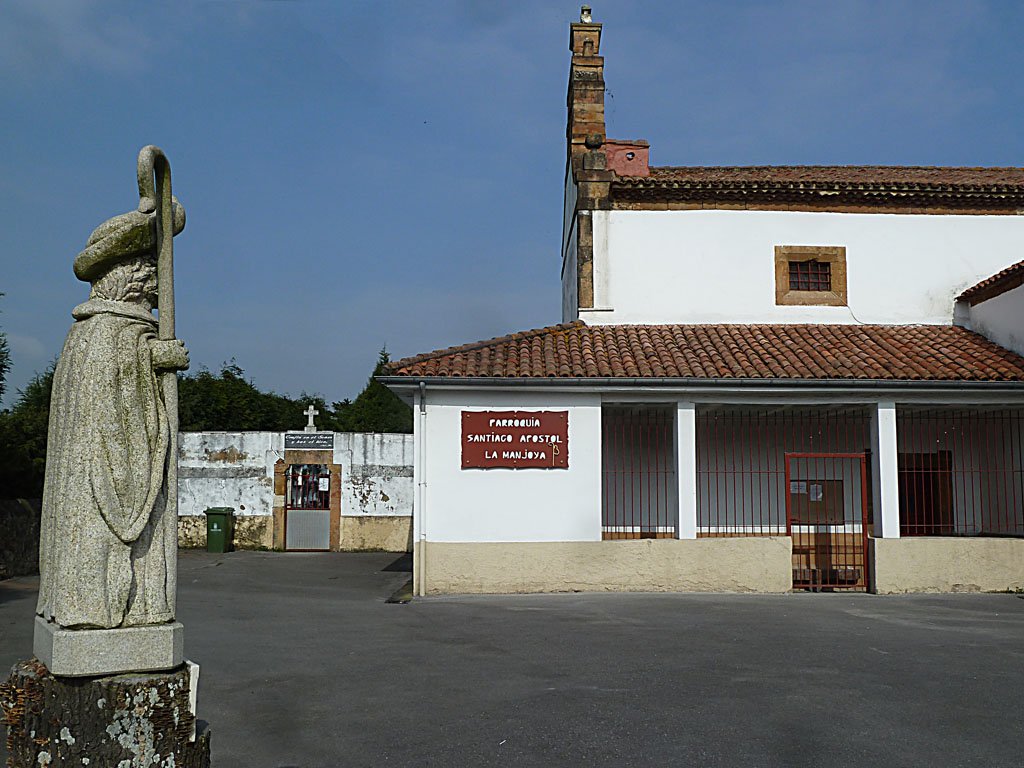
Iglesia De La Manjoya: Visiting Hours, Tickets, and Travel Guide to Oviedo’s Historic Church
Date: 14/06/2025
Introduction
Nestled in the parish of Manjoya—just southwest of Oviedo’s city center—Iglesia De La Manjoya (also known as Iglesia de Santiago Apóstol de La Manjoya) is a captivating example of Asturian religious architecture and a significant waypoint along the Camino de Santiago, specifically the Camino de San Salvador. This parish church harmoniously blends medieval origins, Baroque reconstruction, and rural Asturian design, making it both a spiritual and cultural landmark for locals and pilgrims alike.
Whether you’re seeking a site of religious significance, architectural interest, or a peaceful stop on your journey through Oviedo, this guide provides all the essential details: church history, architectural features, visiting hours, ticketing, accessibility, and travel tips. For further research, consult resources such as the Oviedo Tourism Page and the Iglesia de La Manjoya Wikipedia Entry.
Table of Contents
- Historical Overview
- Architectural Highlights
- Visiting Information
- Events and Community Life
- Nearby Attractions and Travel Tips
- Frequently Asked Questions (FAQ)
- Sustainable and Respectful Tourism
- Conclusion
- References
Historical Overview
Origins and Pilgrimage Significance
The roots of Iglesia De La Manjoya trace back to the 13th and 14th centuries, when the area was referenced as a “behetría”—a medieval settlement with the right to choose its own lord. The current church structure was reconstructed in the Baroque period atop these medieval foundations, adopting the rural Asturian “Barroco popular” style.
The church’s name is believed to derive from the French exclamation “mon joie!”—uttered by pilgrims upon first glimpsing Oviedo’s Cathedral of San Salvador. This etymology underscores the church’s longstanding role as a spiritual milestone for those traveling the Camino de San Salvador, the pilgrimage route linking León and Oviedo and ultimately continuing to Santiago de Compostela (Oviedo Tourism; es.wikipedia.org).
Architectural Highlights
Exterior Features
- Stonework: The church is constructed using reddish ashlar stone (sillar) from local quarries, particularly evident at corners, window surrounds, and the robust masonry.
- Espadaña (Bell Gable): A distinctive three-arched bell gable with pointed pinnacles rises above the facade, a hallmark of Asturian ecclesiastical architecture.
- Portico and Patio: The main portico is closed at the front and open on one side, offering shelter for gatherings. In front stands a granite statue of Santiago Apóstol, installed in 2010 and crafted by a Galician stonemason, symbolizing the community’s enduring faith (Asturias.me).
Interior Elements
- Nave and Chapel: Inside, a single nave leads to a modest altar. One lateral chapel features the traditional image of Santiago Matamoros (Saint James the Moor-slayer), a focal point for pilgrims and parishioners.
- Artistic Details: While the space is intimate and simply adorned, it contains devotional objects and iconography related to Saint James, reflecting both local and pilgrimage traditions.
Visiting Information
Location and Access
- Address: Calle Los Derechos Humanos, 55, Manjoya, Oviedo, Asturias, 33008 (VivirAsturias).
- Getting There:
- By Car: Easily accessible from Oviedo, with limited parking nearby.
- By Public Transport: Served by local bus lines; check the Oviedo municipal website for routes.
- On Foot/Bicycle: Pleasantly reached via walking or cycling paths, especially for Camino de Santiago pilgrims.
Opening Hours and Admission
- Visiting Hours: Generally open during Mass (usually at 13:00 in winter) and community events. Hours may vary outside service times, especially on holidays—check ahead with the Oviedo Tourist Office or the parish for current information.
- Tickets: Admission is free; donations are welcomed for church maintenance.
Facilities and Accessibility
- Basic Amenities: Seating and restrooms are available during services/events. The patio is notable for its sculpture and gathering space.
- Accessibility: The entrance is at ground level, but some uneven surfaces and steps are present. Visitors with mobility challenges should confirm access in advance.
Guided Tours
- Guided tours may be arranged through the Oviedo tourism office, especially during peak tourist seasons or local festivals.
Events and Community Life
- Regular Mass: Held weekly, typically at 13:00 in winter.
- Feast of Santiago Apóstol: Celebrated on July 25, this event features special Mass, processions, and community gatherings.
- Pilgrimage Activities: As an official stop on the Camino de San Salvador, the church welcomes pilgrims year-round, with heightened activity during Holy Years (Año Santo Compostelano) (Asturias.me).
Nearby Attractions and Travel Tips
Other Historical Sites
- Cathedral of San Salvador: Oviedo’s iconic Gothic and Baroque cathedral.
- Iglesia de San Julián de los Prados: A UNESCO-listed pre-Romanesque church.
- Museo Arqueológico de Asturias: Featuring regional artifacts and art.
Dining and Accommodation
- The Manjoya and Oviedo areas offer traditional Asturian restaurants and a variety of lodging options. For recommendations, consult the VivirAsturias guide.
Practical Tips
- Plan Ahead: Confirm hours and guided tour availability in advance.
- Dress Code: Modest attire is recommended; hats should be removed inside.
- Photography: Allowed outside; inside only with permission, especially during religious services.
- Weather: Asturias is known for variable weather; bring rain gear and check the forecast.
Frequently Asked Questions (FAQ)
Q: What are the visiting hours for Iglesia De La Manjoya?
A: Typically open during Mass and events; verify with the parish or Oviedo Tourist Office for current schedules.
Q: Is there an admission fee?
A: No, admission is free. Donations are appreciated.
Q: Are guided tours available?
A: Yes, through the Oviedo tourism office by prior arrangement.
Q: Is the church accessible for people with reduced mobility?
A: The main entrance is at ground level, but some uneven surfaces and steps exist—please check in advance for specific needs.
Q: When is the best time to visit?
A: During regular Mass or the feast of Santiago Apóstol (July 25) for a deeper cultural experience.
Q: Can I take photographs inside?
A: Exterior photography is welcome; interior photography requires permission, particularly during services.
Sustainable and Respectful Tourism
- Support the Community: Donations and purchasing local crafts help support the parish and its activities.
- Respect the Site: Maintain silence during services, dress appropriately, and dispose of waste responsibly.
- Engage Locally: Basic Spanish greetings are welcomed; interacting respectfully with parishioners enhances the experience.
Conclusion
Iglesia De La Manjoya stands as a testament to Asturias’s spiritual heritage, community spirit, and architectural beauty. Its role as both a parish church and a cherished stop on the Camino de Santiago offers a unique cultural encounter in Oviedo—one that welcomes pilgrims, history enthusiasts, and travelers alike.
Plan your visit by checking current schedules, considering a guided tour, and respecting local customs for a rewarding and memorable experience. For further exploration of Oviedo’s historic and cultural sites, download the Audiala app and follow updates on social media.
References
- Oviedo Tourism
- Iglesia de La Manjoya - Wikipedia
- Asturias.me - Escultura Santiago Apóstol en La Manjoya
- VivirAsturias - Escultura Santiago Apóstol en La Manjoya
- Lonely Planet - Oviedo Attractions



